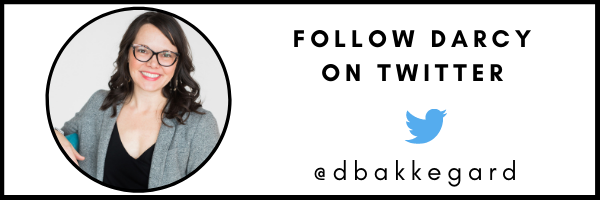TL;DR:
- There are strategies to help you accomplish tasks and feel joy.
- Writing down your to-dos and figuring out what needs to be the focus can help clear your mind.
- Use tools to help you work through your problems and challenges to find joy.
When chaos abounds (and when doesn’t it as an educator?) and things feel like they are spirling away, I grab hold of something tangible that I can control that will also bring me a bit of joy. At home that might mean completing one concrete task on my to-do list: paint a wall, clean out a closet, weed a flowerbed. Something I can SEE is done and made “better” by my efforts. At school that means reconnecting with students, testing new technology or techniques, and trying to “fix” something that hasn’t gone as well as I’d like.
When chaos abounds (and when doesn’t it as an educator?) and things feel like they are spirling away, I grab hold of something tangible that I can control that will also bring me a bit of joy. Share on XWhat! Another task?
Might sound odd: taking on yet another something amidst all the chaos in order to bring more joy? Doesn’t seem to add up.
Here’s the thing: taking hold of something I can control—refocusing on something that matters TO ME—renews my sense of purpose as an educator. And getting back to my purpose increases my joy. More joyful educator, more joyful learning. Everyone wins.

Me trying to write (a book) and be a mom to triplets, here four months old. Even with this pile on my lap, taking charge of something helped me regain some balance and sense of myself.
This isn’t about tugging at your heartstrings; it’s about acknowledging that the best person to solve ANY classroom challenge is YOU, and all the other teachers like you. Another way to look at it: If it’s not working for you, who else isn’t loving the status quo? If it’s not working for you, why should you have to settle?
Here are two tools that can help you sift through the chaos to recapture your purpose and revitalize your joy for teaching.
Find a Focus
Use this Needs Tool to help funnel your ideas. The goal is twofold:
- Gain some clarity by writing down all the things swirling and worrying and weighing on your mind. Big and small, doesn’t matter. Use the top four columns to capture some of the things limiting or preventing joy in your work (add more topics by using another sheet of paper!). Writing them down. Putting them in a place and taking them off your mind will help lighten your load.
- Once you can “see” all that’s been bugging you written out, assess what is most important to address. Ask yourself, what would benefit YOU most? What would help students? What might be done quickly and easily? Out of everything, what would bring you the most joy? Filter those ideas down to find one focus. Then you can get to work.
Design, Test, and Implement an Idea
Before you dive into the doing, give yourself time to organize your ideas. The Educator Canvas is designed to help you strategize and visualize your plan. There’s no right or wrong way to complete the Canvas. Start by writing out the problem/challenge and then scan the questions. After that, jot down answers as they come. Ignore questions that don’t apply to your situation, and revise responses as you work through to a solution. Again, the goal is twofold:
- Take a bit more time now to think through the steps and save time in the long run. Developed through dozens of workshops with teachers, the questions are based on common roadblocks we saw preventing or limiting success. By focusing on your purpose (goals) and anticipating some of the challenges you might face, you’ll create a better, more viable solution.
- Writing it out removes the burden of having to remember what you were thinking. It makes sharing the idea and gathering input easier. It gives you a place to revise and review.

Use the Educator Canvas to figure out how best to implement that new tool/app/lesson you heard about. Use it to figure out how to connect with that one student. Go through the questions to help you find the best possible answer.
Teaching will always be a bit chaotic. Embrace the chaos and create a plan to recapture your purpose. In doing so, recapture your joy for teaching.
Want more? Join me at #TeachBetter2022 for a session designed to help you turn a possible “problem” into a possibility. For more tools to help you take back your PD time, join me at theeducatorslab.com
About Darcy Bakkegard
Darcy Bakkegard is an English/Theatre teacher who got tired of traditional sit-n-get PD and now creates the type of PD she always wanted with The Educators’ Lab. With 10 years of experience teaching English and Theatre, Darcy specializes in interactive strategies for the classroom, meaningful tech integration, and building relationships with students. Darcy is an ISTE Certified Educator, an experienced international presenter, and empowerer of teachers. She co-authored The Startup Teacher Playbook to help teachers take back their professional development and rekindle their spark for teaching.


